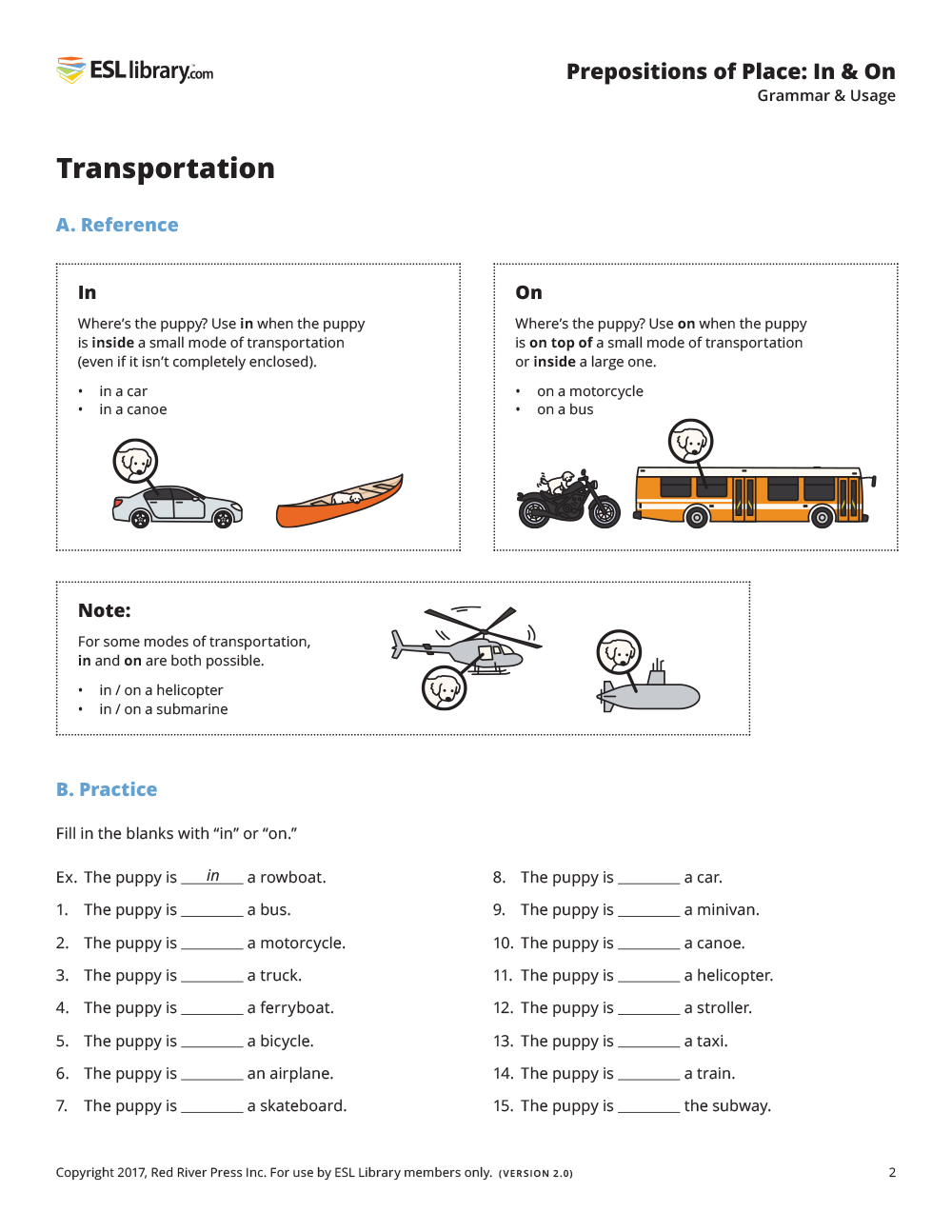Prepositions are little words with many functions. Prepositions like in and on get used for multiple purposes, including place, time, and direction. But even within a specific purpose such as prepositions of place used for transportation, in and on can be difficult for our English students to learn. Why do we say in a car but on a bus?
Try presenting the following guidelines to make transportation prepositions easier to teach and learn.
Grammar & Usage Resources – Prepositions of Place: In & On
Transportation Prepositions
Rule #1
Use in when the noun is inside a small mode of transportation (such as a car). Note that we also use in with box or bowl shapes (such as wagon or canoe) even though they’re not enclosed.
- in a car
- in a truck
- in an SUV
- in a minivan
- in a Porsche
- in a taxi
- in a wheelchair
- in a stroller
- in a wagon
- in a canoe
- in a kayak
- in a rowboat
Note
Depending on the type of chair, in and on are both possible:
- in an armchair/recliner
- on a dining room chair/office chair/sofa
Rule #2
Use on when the noun is on top of a small mode of transportation (such as a motorcycle) or inside a large vehicle (such as a bus).
- on a bicycle
- on a tricycle
- on a motorcycle
- on a horse
- on a skateboard
- on a bus
- on a train
- on the subway
- on a boat
- on a ferry
- on a ship
- on an airplane
Note
For some modes of transportation, in and on are both possible.
- in/on a helicopter
- in/on a submarine
Practice Activity
Have students cut out pictures of various modes of transportation from magazines (or use our flashcard set). Then have students quiz each other by holding up an image and asking Where’s the puppy? Students must answer with The puppy is in… or The puppy is on….


